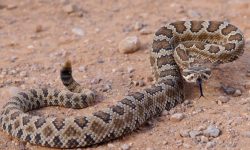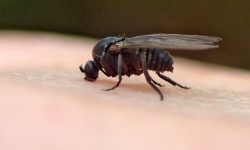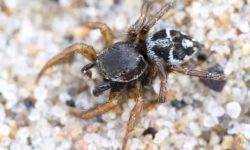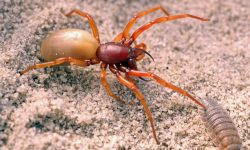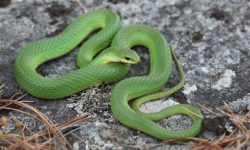Silverfish are troublesome intruders with hairy legs and elongated bodies, sporting a soft silver hue. While they may take up residence in various areas of your home, it’s crucial to confirm a silverfish infestation before exploring removal methods. Interestingly, there are fourteen distinct home invaders and bugs that share a resemblance to silverfish.
There are many bugs that look like silverfish, including firebrats, woodlice, earwigs, booklice, jumping bristletails, and beetle larvae. Familiarizing yourself with their distinctive features is essential for accurately identifying a silverfish among these look-alikes.
Different types of bugs that look like silverfish
Firebrats
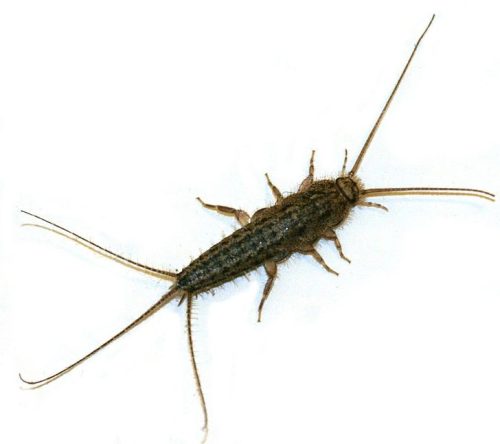
The firebrat leads the pack of animals that are almost exactly like silverfish. Firebrats live in similar habitats to silverfish because they are members of the same order (Zygentoma).
Because firebrats prefer warmer temperatures, their activity patterns are an important differentiator. As such, you are more likely to come across a firebrat in a busy kitchen than in the cold basement.
Firebrats are much smaller than silverfish, which can grow to be twice as long as a firebrat, usually measuring around 1/2 inch. Firebrats have an amazing lifetime despite their diminutive size; they may live up to five years, which is twice as long as an average silverfish.
Because of their close genetic kinship, firebrats—which are distinguished by a brownish-gray color with deeper brown bands—are frequently mistaken for silverfish.
Booklice
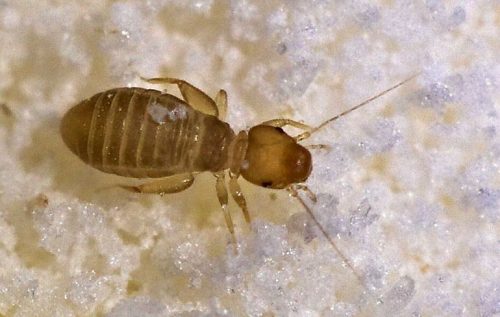
When closely observed, booklice bear a resemblance to bed bugs more than silverfish. This similarity often leads to confusion, as their feeding habits are shared with certain silverfish species.
One distinguishing characteristic is their tendency to feed on grains, infiltrating packaged foods in the process. Additionally, some species of booklice consume the glue and cellulose found in books, which accounts for their commonly used name. Given their frequent presence in pantries, individuals often mistake sightings of booklice for silverfish.
Termites
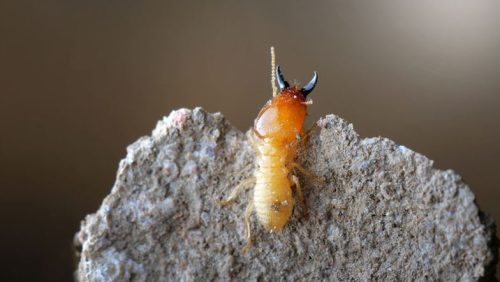
Termites can vary widely in color, with almost 3,000 species now recognized. A lot of species have a very light color or are translucent, which makes them look like silverfish at first glance.
Termites, of course, have entirely different bodies, with big oval abdomens and heads that resemble ants. This creature is noteworthy because, although being mistakenly identified with carpenter ants, they are actually descended from roaches.
Termites rarely leave the walls once an infestation begins, so you won’t commonly see them within your house. However, you might occasionally observe a rogue termite outside the colony. When it’s time to mate, termite alates will begin congregating around the entrances in anticipation of the mating flight, which usually results in a greater sighting rate.
Two-Pronged Bristletail
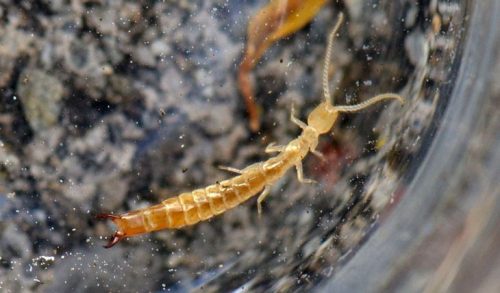
Only about 170 of the approximately 800 species of this creature can be found in North America. The most obvious distinction between two-pronged bristletails and silverfish, if you take the time to look that closely, is that, as their name suggests, they have two cerci but no epiproct.
They have a clearly distinct head and their long, thin bodies taper less than those of silverfish. Their multicolored, segmented bodies might be transparent. With 10 or more beaded segments, their antennae are likewise unique.
Because two-pronged bristletails require damp, humus-rich soil, they are actually thought to be an indicator of healthy soil. It is unlikely that you will find one in your house unless it was accidentally brought in by a potted plant or any similar object.
Woodlice
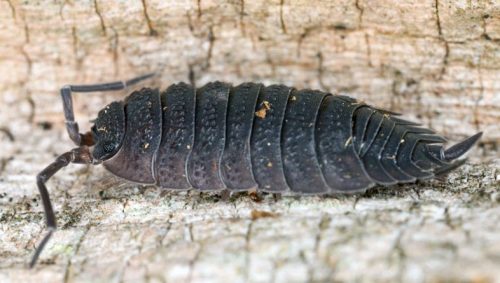
Although the term “woodlice” may sound foreign at first, you have probably encountered pill bugs (Armadillidiidae), a common land-based crustacean that is well-known for its ability to curl up into a ball when it feels threatened.
Though they can differ greatly in size, shape, and color, woodlice often have a similar look. Certain species have bodies that resemble teardrops, much like silverfish.
The similarities are partly explained by the gray to pale tones found in many species. They do, however, have different gaits, with woodlice generally moving more slowly while running.
Carpet Beetle Larvae
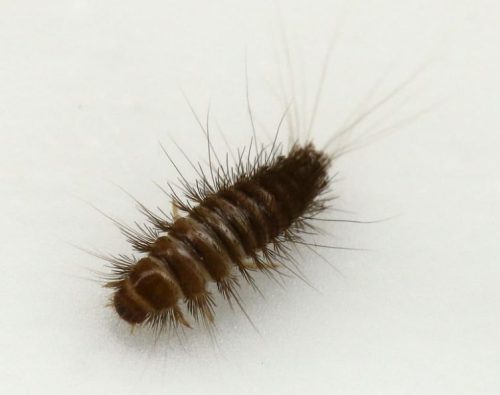
While distinguishing an adult carpet beetle from a silverfish is straightforward, the same cannot be said for their larvae. These tiny pests share a resemblance with termites in terms of shape, yet exhibit movements akin to silverfish. Detecting them poses a challenge as they adeptly conceal themselves within carpet fibers and integrate into various textiles while consuming the material.
Their coloration varies, encompassing shades of brown, gray, or white, and often featuring stripes. Depending on the species, these color patterns can further contribute to the confusion with silverfish.
Centipedes

Centipedes are a large and diverse group within the arthropod kingdom, with over 3,000 species known to exist and an estimated 5,000 still to be discovered. Despite their glaringly different look, they are on this list because of their remarkably similar “swimming” movement pattern, which could cause misidentifications.
Even though sizes vary throughout species, certain centipedes can get rather big. But what makes them unique is that they are skilled hunters. Consider the ordinary house centipede (Scutigera coleoptrata), which has two cerci and about 15 pairs of legs. Its length ranges from one to 1.4 inches. To make matters more complicated, their bodies have a grayish-yellow color that makes them surprisingly easy to confuse for silverfish, especially if you catch a glance of them out of the corner of your eye.
Earwigs
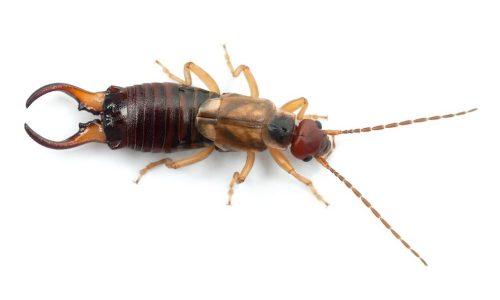
The world is home to over 2,000 earwig species, and their resemblance to silverfish often leads to confusion, primarily due to the presence of cerci. In female earwigs, the cerci are straight, while males exhibit distinctive pincer-like cerci. Interestingly, if a male loses one of its pincers, it regrows in a straight form resembling that of a female.
However, even without considering the pincers, females can be easily differentiated from silverfish by the absence of an epiproct. Additionally, earwigs feature a cylindrical abdomen that abruptly terminates where the cerci begin, setting them apart from silverfish. Their typical brown coloration contrasts with the lighter or silvery appearance of silverfish. Notably, the distinctive ant-like heads of earwigs further contribute to their distinguishable features.
Green Lacewing Larvae
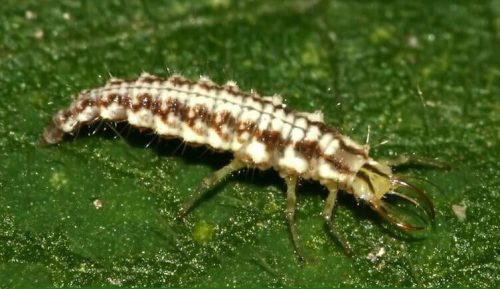
In the garden, lacewings serve as beneficial allies, preying on mealybugs and other pests. The larvae of lacewings exhibit a distinctive elongated shape, resembling squished diamonds. This unique form not only bears a slight resemblance to the silhouette of a silverfish but also adds to the confusion by making it easy to mistake the front for the back.
When identifying a lacewing larva, the long, straight antennae may be mistaken for cerci, and the larva’s mandibles, often minuscule and requiring a magnifying glass for proper observation, contribute to the potential confusion.
Jumping Bristletail
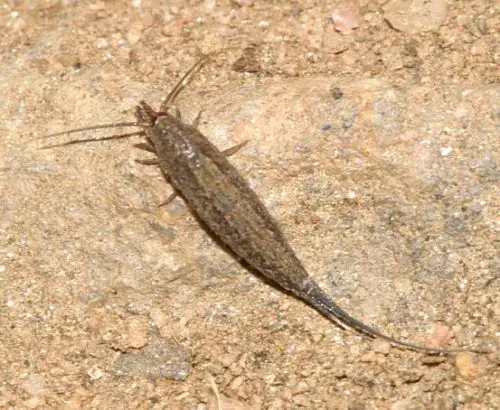
These creatures bear a striking resemblance to silverfish, to the extent that their two orders were once considered identical. However, two significant differences distinguish them from silverfish.
Firstly, their epiproct, a posterior structure, is notably longer than their relatively short cerci. Secondly, this elongated “tail” allows the jumping bristletail to execute an impressive leap of up to 12 inches, serving as a remarkable defense mechanism against potential predators.
Characterized by a hunched thorax, jumping bristletails sustain themselves on a diet of algae, mosses, and detritus. Among the approximately 500 known species, none have gained notoriety for invading houses, marking a crucial distinction from silverfish.
Roaches
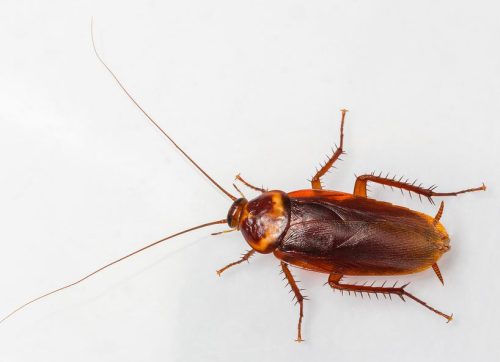
Encountering cockroaches in your home is a dreaded experience, unless, of course, your name happens to be Joe. The appearance of a roach varies significantly from one species to another, with many smaller species comparable in size to silverfish.
These critters are known for their swift movements, often causing confusion with silverfish as they hastily dart away from sources of light. Adding to the challenge, numerous species deviate from the expected dark brown color associated with the infamous “Big Three,” displaying hues of pale or even white, and some featuring visible patterns.
It’s important to note that the majority of roach species tend to steer clear of human dwellings. However, the accidental intrusion of one into your home can lead to a false alarm, potentially mistaking it for a silverfish.
Springtails
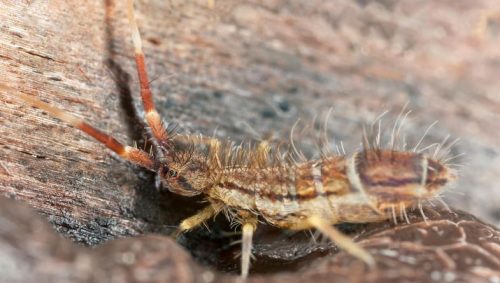
Ranging from 1/16th to 1/8th inch in length, springtails form the largest group of hexapods, yet they rank among the smallest in size. Their diverse color palette includes shades of white and silver. Although these diminutive bugs are known to occasionally nibble on plant roots, especially in gardens, the harm inflicted on the plant is usually minimal, except for saplings and sprouts.
Remarkably beneficial, springtails contribute to decomposition by consuming fungi and bacteria. Their segmented bodies lack cerci and more closely resemble termites, although discerning these features without a magnifying glass and keen reflexes can be challenging. The name “springtails” originates from their unique abdominal curling mechanism held in place by a biological hooking mechanism.
When threatened, springtails release their abdomen, propelling them into the air with an impressive leap. The combination of certain species’ coloration and their petite size creates the potential for confusion with juvenile silverfish.
People Who Read This Also Read:

